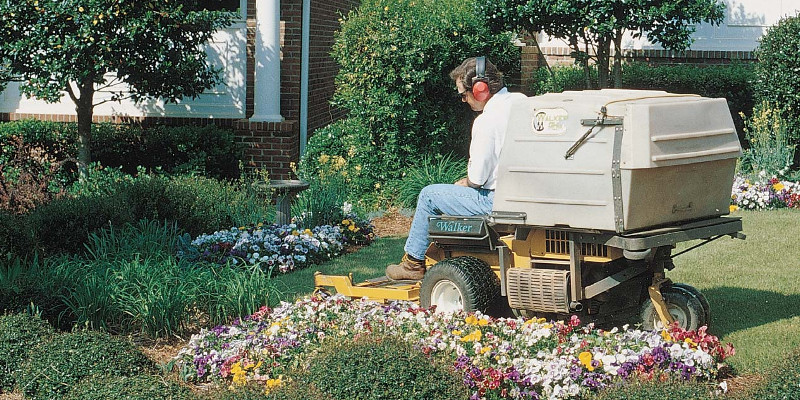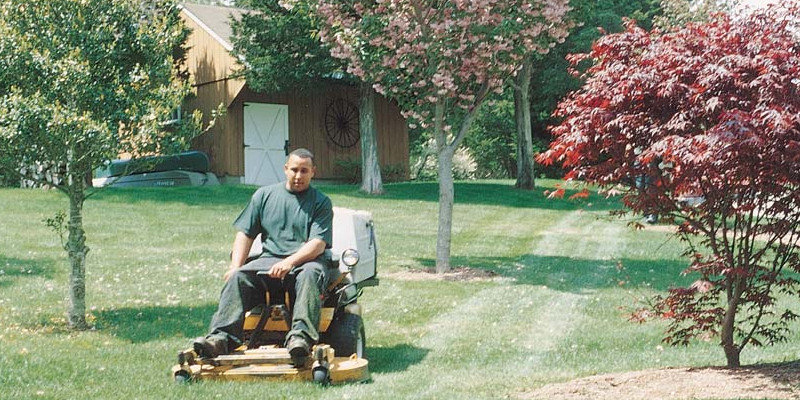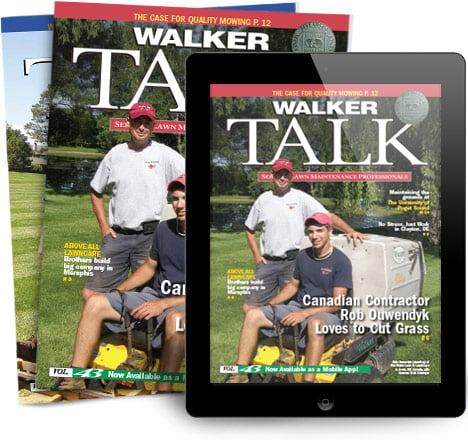Walker Mower owners pride themselves in having a machine that does more than mow a lawn; Walkers, they say, actually “manicure” a lawn. As a manufacturer, we like to hear that, yet at the same time we understand that the way an operator uses the mower can mean the difference between an averagelooking lawn and a spectacular one.

The following are some tips to help you help your Walker Mower (or any mower for that matter) perform to the best of its ability, delivering an optimum cut for the health and beauty of your customers’ lawns.
Adjust and clean. The best way to adjust your mower is to park it on a level surface. Check and adjust the deck so its nose points down approximately 1/4 inch and the sides are level within 1/8 inch. If necessary, use washer shims on the four deck height pins to adjust the deck to the dimensions.
Check to make sure the tires are inflated according to recommended specifications (see owner’s manual). Clean (e.g., remove any “caked-on” grass from the underside of the deck) and make sure the blades are sharp. Sharp blades ensure a clean cut, and they minimize engine stress.
Cutting height. A common mistake is to cut grass too low. Lawns that are cut too low are especially susceptible to disease and are rather intolerant of dry conditions. Mowing low also increases the likelihood that the lawn will be “scalped” if the mower encounters a particularly uneven mowing surface. Conversely, lawns that are cut too high lack the smooth, tabletop look desired by customers. The challenge, then, is to cut grass at just the right height. What is that height? Most grass varieties should be mowed when the grass reaches approximately four inches tall, at which time the deck should be adjusted to remove no more than one-third of the grass plant. Grass types like Bermuda and Zoysia can be mowed a little shorter, to approximately two inches.
Ground speed. Speed counts when mowing lawns, but ground speed isn’t everything. In fact, operating a mower too fast can cause the deck to bounce and leave behind an uneven cut. Going too fast can also compromise the overall performance of the mowing deck and cause it to clog in wet conditions. Learn to match your mowing speed to the application, and don’t be afraid to slow down when conditions dictate. Remember, how fast any operator completes a mowing job depends less on the actual ground speed of the machine and more on how maneuverable the mower is, how much trimwork it saves a crew, and how easily it handles clippings and debris.
Clippings. Whether an operator picks up clippings, side-discharges them or employs a mulching deck is again dependent on mowing conditions and application. Collecting clippings will deliver the nicest-looking lawn. However, to save time and return valuable nutrients back to the soil, many mowing contractors prefer to side-discharge or use a mulching deck when conditions permit.
Turning. Any zero-turn mower has the capability to literally turn on a dime. This can make a dramatic picture in a parking lot when demonstrating a mower’s maneuverability. But in the field, turning quickly and sharply can damage the turf. When making any sharp or zero-turn with your mower, slow down prior to making the turn and avoid twisting on the inside tire. Note: Watch the “How to Mow” video furnished with each Walker Mower to see the technique for making a zero turn without damaging the grass. In wet conditions, you may have to modify the turn a bit by angling your mower back and forth before starting your next run.
Patterns. One of the unique features of Walker Mowers is their ability to naturally stripe a lawn. The suction or vacuum created by the deck lifts grass blades to create the striping effect. Other mower decks use a roller to create a similar effect. Either way, leaving behind a pattern or stripe can enhance a landscape’s appearance and add value to your service. When striping or otherwise making a pattern in the turf, work to keep your lines straight and avoid “messing up” the finished product by driving across the pattern. Remember to alternate your mowing direction from week to week. Mowing in the same direction can create ruts in the lawn and leave behind an unsightly “washboard” effect.

Additional services. Aerating and dethatching a lawn will help to keep it healthy and looking lush. Most lawns should be aerated a couple of times a year to reduce compaction and allow air, water and nutrients to reach the plants’ root systems. An excessive thatch layer has the same negative impact on a lawn and can be removed by using a dethatcher attachment. Since dethatching can sometimes disturb the tender roots of newly emerging grass plants, treatment should be done when grass is dormant.
Beautiful lawns don’t just happen, they are planned. Behind every beautiful lawn there is a well-maintained and properly adjusted mower, not to mention a careful operator who matches his or her mowing technique to the application and mowing conditions.




 Site Search
Site Search



